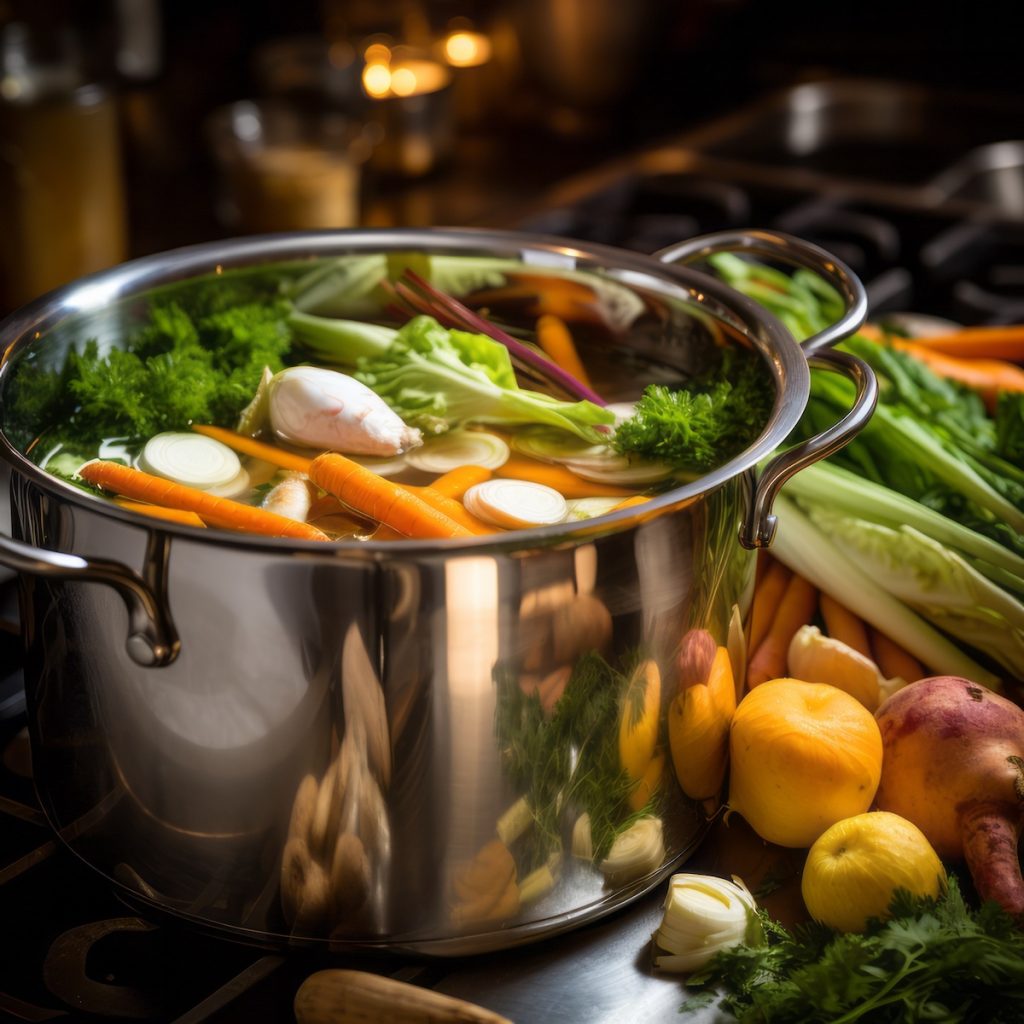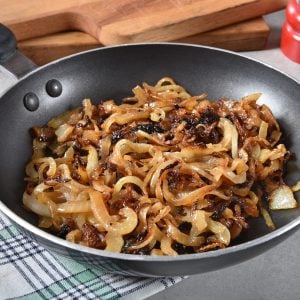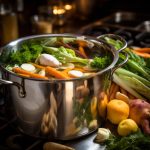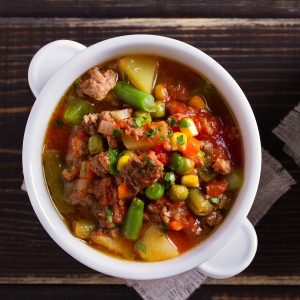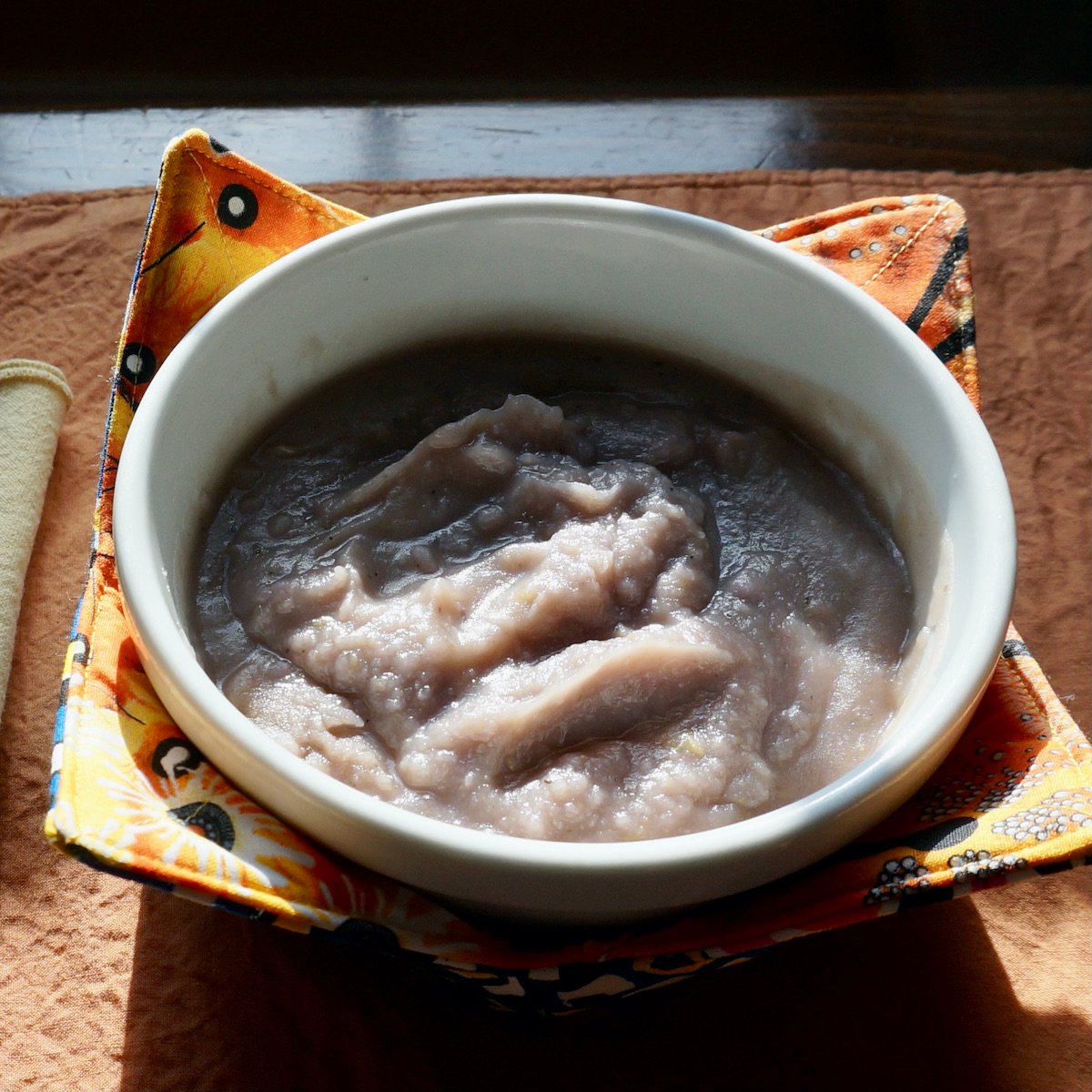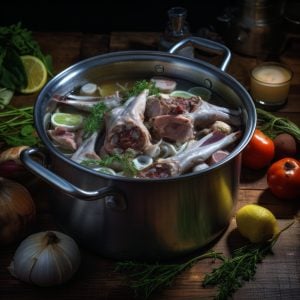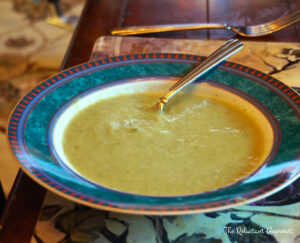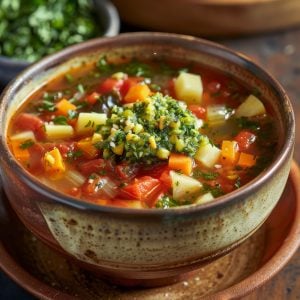Vegetable Stock Is Essential in Your Cooking Knowledge
Vegetable stock is a fundamental building block in cooking that elevates countless dishes with its rich, natural flavors. Simmering fresh vegetables, herbs, and aromatic spices creates a flavorful liquid that serves as the perfect base for soups, stews, sauces, and grains.
Unlike water, vegetable stock adds depth and complexity to your recipes without overpowering the main ingredients, making it an essential pantry staple for every home cook.
Using homemade vegetable stock allows you to control the quality and taste, avoiding the additives and excess sodium often found in store-bought versions. It’s also an excellent way to reduce food waste by using leftover vegetable scraps like carrot peels, onion ends, and celery leaves. This not only enhances your dishes but supports sustainable cooking practices.
In this post, I’ll share a simple, foolproof recipe for vegetable stock that you can customize based on what’s in your kitchen. Whether you’re cooking a hearty minestrone, a delicate risotto, or a vibrant vegetable soup, a good vegetable stock transforms ordinary meals into memorable ones.
Mastering this technique empowers you to bring fresh, wholesome flavor to your cooking every day. Let’s dive in and start making your own vegetable stock from scratch!
Vegetable Stock Recipe
Ingredients
- 3 tablespoons olive oil
- 1 onion roughly chopped
- 2 carrots peeled and roughly chopped
- 2 leeks cleaned and roughly chopped
- 2 stalks celery roughly chopped
- 1 turnip peeled and roughly chopped
- 1 parsnip peeled and roughly chopped
- ½ pound mushrooms sliced in half
- 1 Sachet d'Epices
- 10 cups water cold
Instructions
- Heat the oil in a heavy bottomed 6 quart stockpot over medium high heat.
- Add the onion, carrots, leeks, celery, turnip, parsnip and mushrooms, and cook for 5 minutes.
- Add the Sachet d'Epices and water.
- Bring to a boil and quickly reduce heat to a simmer. Cook uncovered for 30 minutes, skimming the top as necessary.
- Strain the stock through a colander to remove the large solids. Restrain through cheesecloth to remove the fine particulates.
- Cool, and store the stock as described in the introduction.
How to Make Vegetable Stock
Gather Ingredients
Collect fresh vegetables like onions, carrots, celery, garlic, and any other scraps or aromatics you want to use (e.g., leeks, mushrooms, parsley stems, peppercorns).Prepare Vegetables
Wash and roughly chop the vegetables into large chunks. No need to peel unless very dirty.Heat Oil (Optional)
In a large stockpot, heat a small amount of olive oil or vegetable oil over medium heat. Sauté onions, carrots, and celery for about 5 minutes until they start to soften and develop flavor (optional but adds depth).Add Remaining Vegetables and Aromatics
Add garlic, mushrooms, herbs (like thyme, parsley), peppercorns, and any other scraps.Add Water
Pour in cold water to cover the vegetables by about 1-2 inches (usually 8-10 cups depending on pot size).Simmer
Bring to a gentle boil, then reduce heat to low. Simmer uncovered for 45 minutes to 1 hour. Avoid boiling vigorously to keep stock clear.Strain
Remove from heat and strain the stock through a fine mesh sieve or cheesecloth into a large bowl or pot.Cool and Store
Let the stock cool, then store in airtight containers. Refrigerate for up to 4-5 days or freeze for longer storage.
Where to Use Vegetable Stock In Your Cooking
Use | Description |
| Soups | Forms the flavorful base for vegetable, lentil, minestrone, and other soups. |
| Stews and Braises | Adds depth and moisture to vegetable or meat-based stews and slow-cooked dishes. |
| Risotto | Replaces water to slowly cook and infuse rice with rich, savory flavor. |
| Grains & Pulses | Cook quinoa, couscous, barley, or beans for added flavor instead of plain water. |
| Sauces & Gravies | Creates a savory base for pan sauces, gravies, or reductions. |
| Stir-Fries | Use as a liquid to deglaze pans or gently steam vegetables and proteins in stir-fries. |
| Poaching Liquid | Poach vegetables, tofu, or fish in vegetable stock for extra taste. |
| Mashed Vegetables | Add warm stock to mashed potatoes or root vegetables to enhance creaminess and flavor. |
| Casseroles & Bakes | Incorporate into casseroles and baked dishes to keep ingredients moist and flavorful. |
| Pasta Cooking Liquid | Use stock instead of water to cook pasta or noodles for subtle seasoning. |
| Deglazing Pan | Lift browned bits from pans when making sauces or soups, adding intense flavor. |
| Vegetable Stir-ins | Add to sautéed greens or mushrooms for a quick flavor boost. |
| Steaming Liquid | Steam vegetables or dumplings over stock for enhanced aroma and taste. |
| Marinades | Use stock as a component in marinades to tenderize and flavor vegetables or proteins. |
| Savory Baking | Incorporate in savory breads, muffins, or scones to add moisture and depth. |
| Chili and Curries | Use as a cooking liquid to intensify the spices and flavors in chili or curry dishes. |

Is Vegetable Stock Really a Stock?
Traditionally, a stock is made by simmering animal bones (like beef, chicken, or fish) along with vegetables and aromatics. The bones release gelatin and collagen, which give the stock body, richness, and a silky mouthfeel.
This gelatin content is what technically defines a “stock” compared to a “broth,” which is usually lighter and made by simmering meat or vegetables without bones.
Vegetable stock contains no bones, so it lacks gelatin and doesn’t have that same body or mouthfeel. It’s essentially a flavorful broth made by simmering vegetables, herbs, and seasonings. Because of this, some chefs prefer to call it “vegetable broth” instead of stock.
That said, vegetable stock is widely accepted as a base liquid in everyday cooking and most recipes, just like traditional stocks. It adds essential flavor and aroma without heaviness, making it perfect for vegetarian and vegan dishes.
So, while it’s not a “stock” by strict classical definition, vegetable stock serves the same purpose in cooking: providing a rich, flavorful foundation. The terminology is flexible depending on context!
And be sure to check out my delicious recipe for Vegetable Soup.

